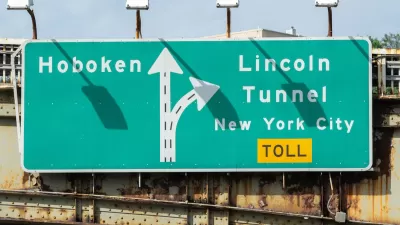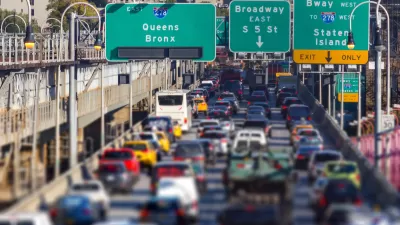Transportation investment is struggling to keep pace with population growth.

The Columbus Dispatch reports on "modest gains" over the past few years in tackling congestion and promoting sustainable transportation options in Central Ohio. Patrick Cooley explains that while there was a dip in the percentage of commuters who drive, that small achievement was offset by a growth in the overall number of commuters driving.
The Mid-Ohio Regional Planning Commission, using census data, found that the proportion of Franklin County commuters who drive alone to work fell to 81.2 percent, from 81.7 percent, between 2007 and 2016. It's a small decrease, but it reversed an upward trend. However, the total number of people driving alone to work actually increased in that time, to 503,180 from 463,043.
Some of the share of drivers went to public transit ridership, through programs like free bus passes for employees of Downtown businesses and more than doubling the number of high-frequency lines, among other initiatives. Some also went to cycling, with the addition of bike lanes on major streets. But both options are still difficult to access outside of urban cores, Cooley reports.
FULL STORY: Little progress in cutting central Ohio congestion

Study: Maui’s Plan to Convert Vacation Rentals to Long-Term Housing Could Cause Nearly $1 Billion Economic Loss
The plan would reduce visitor accommodation by 25,% resulting in 1,900 jobs lost.

North Texas Transit Leaders Tout Benefits of TOD for Growing Region
At a summit focused on transit-oriented development, policymakers discussed how North Texas’ expanded light rail system can serve as a tool for economic growth.

Why Should We Subsidize Public Transportation?
Many public transit agencies face financial stress due to rising costs, declining fare revenue, and declining subsidies. Transit advocates must provide a strong business case for increasing public transit funding.

How to Make US Trains Faster
Changes to boarding platforms and a switch to electric trains could improve U.S. passenger rail service without the added cost of high-speed rail.

Columbia’s Revitalized ‘Loop’ Is a Hub for Local Entrepreneurs
A focus on small businesses is helping a commercial corridor in Columbia, Missouri thrive.

Invasive Insect Threatens Minnesota’s Ash Forests
The Emerald Ash Borer is a rapidly spreading invasive pest threatening Minnesota’s ash trees, and homeowners are encouraged to plant diverse replacement species, avoid moving ash firewood, and monitor for signs of infestation.
Urban Design for Planners 1: Software Tools
This six-course series explores essential urban design concepts using open source software and equips planners with the tools they need to participate fully in the urban design process.
Planning for Universal Design
Learn the tools for implementing Universal Design in planning regulations.
Ascent Environmental
Borough of Carlisle
Institute for Housing and Urban Development Studies (IHS)
City of Grandview
Harvard GSD Executive Education
Toledo-Lucas County Plan Commissions
Salt Lake City
NYU Wagner Graduate School of Public Service





























